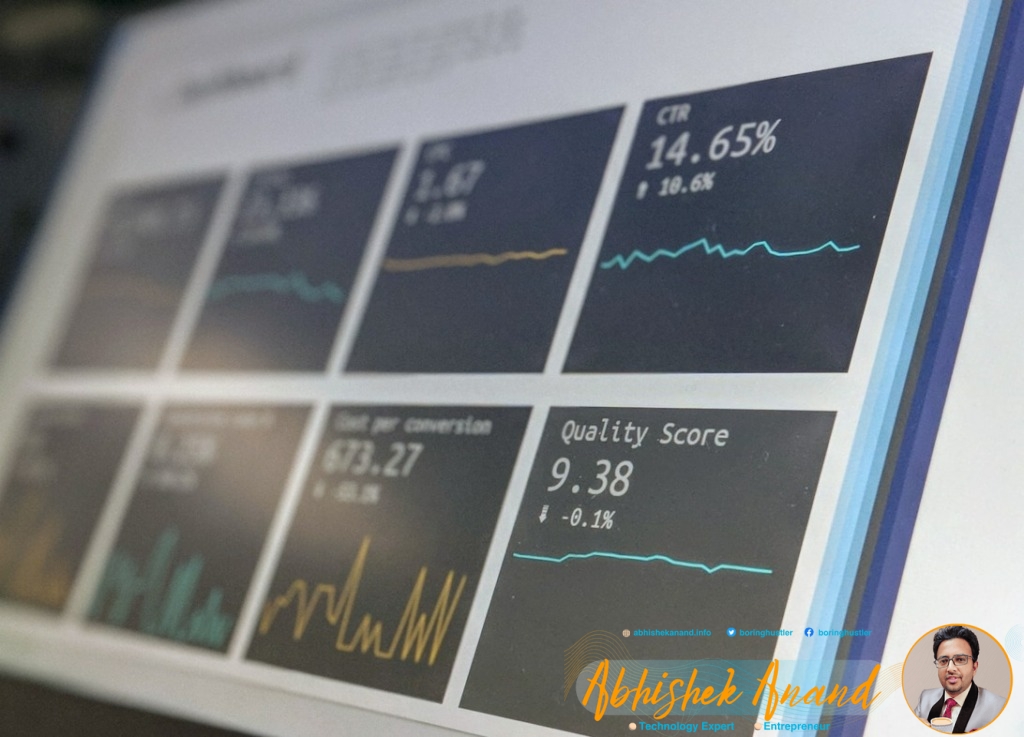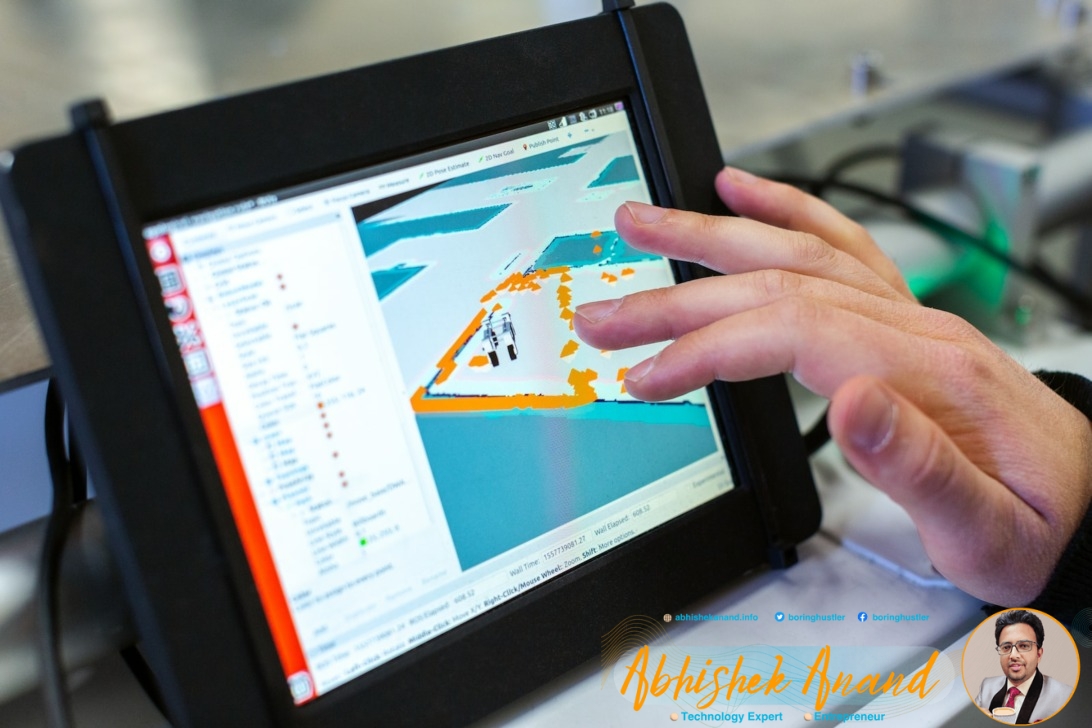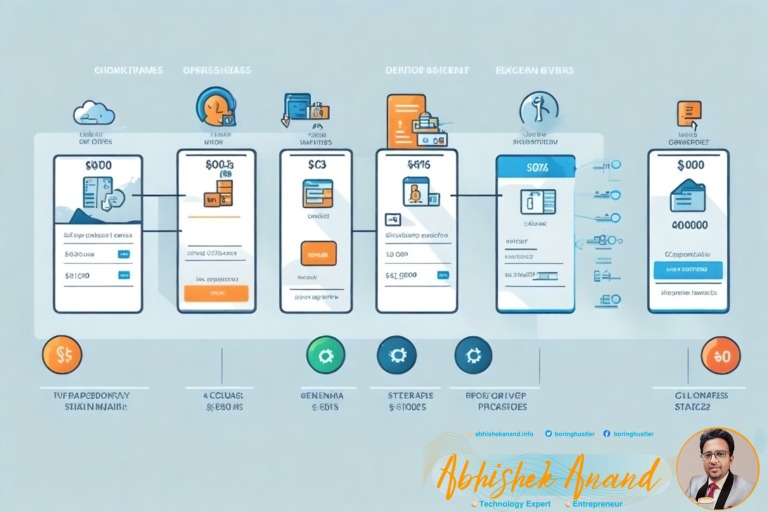Software is an essential tool for businesses of all sizes and industries. As technology continues to evolve, companies have a growing number of options when it comes to software solutions. Two popular choices are Software as a Service (SaaS) and traditional software. While both options offer benefits, there are key differences that can significantly impact a company’s bottom line.
In this article, we will provide an objective analysis of the cost differences between SaaS and traditional software. We will examine the factors that affect pricing such as installation costs, maintenance fees, hardware requirements, and data storage expenses. By exploring these factors in-depth, readers will be able to make informed decisions about which option is best suited for their business needs.
Overview of Software Options Available for Businesses
This discussion will provide an overview of the two main software options available for businesses: Software as a Service (SaaS) and traditional software. SaaS refers to cloud-based software solutions that are accessed through the internet, while traditional software is installed directly onto individual computers or servers. The cost analysis and comparison between these options will be explored from a technical and data-driven perspective.
Definition of SaaS
A commonly accepted definition of Software as a Service (SaaS) is a cloud-based software delivery model where the provider hosts and manages the application, and customers access it via the internet. This type of software offers several advantages over traditional on-premise solutions, including greater flexibility in terms of scaling up or down, lower upfront costs, no need for hardware investment or installation, and easier maintenance and updates.
To compare SaaS with traditional software solutions, it is important to consider some limitations as well. Firstly, SaaS applications rely heavily on internet connectivity; if there are issues with the network connection or server downtime at the provider’s end, users may face disruption in accessing their data or using the application. Secondly, customers have limited control over customization options since they cannot directly access the codebase. Additionally, long-term costs may be higher than those for on-premise solutions due to recurring subscription fees. Lastly, data security concerns can arise when sensitive business information is stored offsite.
Moving onto the next section about ‘definition of traditional software’, it is important to note that this alternative model involves locally installed applications that are managed by an organization’s IT department rather than being hosted by a third-party provider.
Definition of Traditional Software
The traditional software delivery model involves locally installed applications that are managed by an organization’s IT department. With this model, the organization has greater control over customization options and data security, as they can tailor the software to their specific needs and ensure that sensitive information remains in-house. Traditional software also typically provides more robust offline capabilities, allowing users to work without an internet connection and ensuring productivity even in areas with poor connectivity.
However, there are also drawbacks to the traditional software model. Upgrades and maintenance require significant time and resources from the IT department, which can be costly for organizations. Additionally, with traditional software, it is often necessary to purchase licenses for each user or device that will be accessing the application. This can become expensive as organizations grow or add new employees who need access to the same tools.
Moving on to key differences between SaaS and traditional software,…

Key Differences Between SaaS and Traditional Software
When comparing Software as a Service (SaaS) and traditional software, there are key differences to consider. Firstly, SaaS operates on a subscription-based licensing model whereas traditional software involves one-time purchases of licenses. Secondly, SaaS is hosted and maintained by the provider while traditional software is installed on-premise and requires in-house IT support. Thirdly, SaaS offers greater accessibility as it can be accessed from anywhere with an internet connection while traditional software can only be accessed from devices that have the program installed. Lastly, customization options for SaaS may be limited compared to traditional software which may allow for more flexibility in tailoring the program to specific business needs.
Licensing Model
Using a subscription-based licensing model for SaaS allows for more flexible and scalable pricing options compared to the fixed, one-time fee of traditional software licenses. This is because SaaS providers can charge customers based on usage or number of users, allowing businesses to only pay for what they need. In contrast, traditional software licenses require upfront payment regardless of the organization’s size or usage needs. Additionally, SaaS providers often offer different tiers of subscriptions with varying features and levels of support to cater to different customer segments.
To further highlight the advantages of subscription-based licensing model in SaaS over traditional software, consider the following bullet points:
With SaaS, customers don’t have to worry about managing their own servers or infrastructure since everything is hosted by the provider.
Traditional software requires purchasing new licenses when upgrading to newer versions while in SaaS updates are typically included in the subscription price.
The cost for maintenance and security updates are already built into the subscription price with SaaS while traditional software may require additional fees for these services.
Since there’s no need to purchase hardware or manage servers with SaaS, there’s less capital expenditure required upfront compared to traditional software.
Subscription-based licensing models allow businesses to easily scale up or down depending on their current needs without worrying about being locked into long-term contracts.
Moving forward into the subsequent section about ‘hosting and maintenance,’ it is important to note that these factors play a significant role in determining which type of software solution is most cost-effective for organizations.

Hosting and Maintenance
Hosting and maintenance are vital components of any software solution, as they can significantly impact an organization’s operational efficiency and costs. In traditional software deployment, the client is responsible for hosting the application on their own servers or data centers. This requires a significant investment in hardware, infrastructure, and skilled personnel to manage the servers’ uptime, security patches, backups, among other tasks. Moreover, the client has to pay for the licensing fees upfront before deploying it on their premises.
On the other hand, SaaS providers host and maintain their applications on their cloud-based servers. This eliminates the need for clients to invest in hardware or hire additional IT staff to manage it. Instead, clients pay a subscription fee that covers all hosting and maintenance costs by the provider. This provides cost-saving benefits by reducing capital expenditure (CapEx) while shifting it towards operating expenses (OpEx). Additionally, SaaS solutions offer scalability advantages by allowing clients to increase or decrease computing resources based on demand without requiring hardware investments or IT staff scaling up/down.
Moving onto accessibility considerations…
Accessibility
Ironically, the importance of accessibility in software solutions is often overlooked despite being a fundamental aspect that can greatly impact the user experience and inclusivity of all individuals. Accessibility refers to the ease with which users can access and use software applications regardless of their physical abilities, such as visual or auditory impairments. In traditional software, accessibility features are typically limited or non-existent, which can lead to frustration for users who require them. In contrast, Software as a Service (SaaS) providers have made great strides in providing accessible software solutions by incorporating features such as text-to-speech options, keyboard shortcuts, and high-contrast interfaces.
The advantages of accessible SaaS platforms extend beyond improved user experience and interface; they also contribute to greater inclusivity in the workplace. By providing equal access to software tools for all employees, regardless of physical ability or disability status, companies can create a more diverse workforce and foster an environment where every employee feels valued and supported. However, there are drawbacks to relying solely on SaaS platforms for accessibility needs. While many vendors offer robust accessibility features out-of-the-box, customizations may be necessary for some users depending on their specific needs. This brings us to the next section about customization – another important factor to consider when comparing traditional software with SaaS solutions.
Customization
Having discussed the accessibility of SaaS and traditional software in our previous subtopic, we now turn to the topic of customization. One key advantage of traditional software is its ability to be customized to fit specific business needs. Companies can purchase or develop custom features and integrations, allowing for greater control over their software environment.
However, SaaS providers have also begun offering more integration options and customizable features in response to customer demand. In fact, many SaaS solutions offer a user experience that is just as flexible as traditional software. Some even argue that SaaS offers a better user experience due to its focus on ease-of-use and intuitive design. Ultimately, the decision between traditional software and SaaS will depend on each company’s unique needs and priorities when it comes to customization and user experience.
Moving forward into our next section on cost analysis of SaaS versus traditional software, it is important to consider how these factors impact overall costs for businesses.

Cost Analysis of SaaS
The financial benefits of Software as a Service (SaaS) can be seen through the cost analysis when compared to traditional software. SaaS pricing models are based on a subscription basis, which means that companies only pay for what they use. This eliminates the need for upfront investments in hardware and software licenses, making it more cost-effective for businesses with limited budgets. Additionally, SaaS providers handle maintenance and upgrades, reducing IT costs and freeing up resources to focus on business objectives.
To add to this point, one of the key advantages of SaaS is its scalability. As businesses grow or contract, they can easily scale their usage up or down without worrying about additional infrastructure costs. Furthermore, because SaaS applications are hosted in the cloud, users can access them from anywhere without the need for expensive VPNs or remote desktop solutions.
Another advantage of SaaS is that it reduces operational expenses by eliminating the need for dedicated IT staff to manage software installations and upgrades. Instead, these tasks are handled by the provider’s support team at no extra cost to customers. Moreover, because there is no physical infrastructure required beyond an internet connection and a device capable of accessing it, overhead expenses such as power consumption and cooling are also reduced.
While there may be some drawbacks associated with moving to a cloud-based solution like Software as a Service (SaaS), its cost benefit analysis makes it an attractive option for many businesses looking to cut costs while improving efficiency. The ability to subscribe rather than purchase licenses outright offers flexibility in pricing that traditional software simply cannot match. In contrast, traditional software often requires significant upfront investment in hardware and licenses before any benefits can be realized – something we will explore further in our next section on cost analysis of traditional software.
Cost Analysis of Traditional Software
When examining the financial implications of adopting traditional software, it is important to consider the associated costs involved in purchasing licenses and hardware. Traditional software requires a one-time purchase of a license that can be costly upfront, especially for larger organizations. In addition, hardware upgrades may also be necessary to ensure compatibility with the software, further adding to the overall cost.
Despite these initial expenses, traditional software does have its advantages when it comes to budget constraints. Once purchased and installed, there are typically no ongoing subscription fees or costs associated with using the software. This can be especially beneficial for companies with limited budgets who cannot afford recurring monthly or yearly fees that are common with SaaS products.
However, it is important to weigh these pros and cons against each other and compare total cost of ownership over time before making a decision between traditional software and SaaS. In the next section, we will delve deeper into this comparison and explore which option may be more cost-effective in the long run.
Comparison of Total Cost of Ownership
By examining the long-term expenses associated with both options, organizations can make an informed decision on which software solution best fits their budget and operational needs. To compare the total cost of ownership between SaaS (Software as a Service) and traditional software, it is important to consider several factors. Firstly, SaaS often requires less upfront investment since there are no hardware costs and implementation fees are minimal. However, subscription fees for SaaS can accumulate over time and may end up costing more in the long term compared to one-time licensing fees for traditional software.
ROI (Return on Investment) analysis is also crucial when comparing the total cost of ownership between these two options. While SaaS may have lower initial costs, its benefits in terms of efficiency gains and productivity enhancements should be evaluated against its ongoing monthly or annual subscription costs. Traditional software may require more upfront investment but could result in significant savings over time due to lower maintenance costs.
Long-term vs short-term cost comparison is another important factor that organizations must take into account when choosing between SaaS and traditional software solutions. Although SaaS may appear cheaper in the short term due to lower upfront costs, it may not always be economical in the long run if subscription fees continue to increase or if switching from one provider to another becomes necessary. Therefore, organizations must carefully weigh all factors before deciding which option provides better value for their money.
When considering factors such as scalability, security requirements, and customization capabilities along with total cost factors like those mentioned above, organizations can make an informed decision about whether they should opt for a traditional software solution or a cloud-based one like SaaS.
Factors to Consider When Choosing Between SaaS and Traditional Software
When deciding between SaaS and traditional software, several factors must be considered. Business size and growth potential are critical considerations since they can influence the scalability of the software solution. IT resources also play a crucial role in determining whether to opt for SaaS or traditional software. Customization needs, as well as security concerns, are additional factors that should not be overlooked when making this decision. A careful analysis of these factors can help businesses make an informed choice that aligns with their unique requirements and goals.
Business Size and Growth
The size and growth of a business can significantly impact the cost-effectiveness of adopting SaaS or traditional software, as the former may be more suitable for smaller businesses with limited resources while the latter may offer greater flexibility for larger enterprises. For small businesses, SaaS solutions are often more cost-effective due to their scalability and lower upfront costs. These solutions typically require minimal IT infrastructure and maintenance, making them an attractive option for companies that lack dedicated IT staff or have limited budgets.
On the other hand, larger enterprises may find traditional software more appealing due to its flexibility and customization options. Traditional software allows companies to tailor their systems to meet specific needs and integrate with existing infrastructure seamlessly. While these benefits come at a higher initial cost, they can provide significant long-term savings by reducing reliance on third-party vendors and streamlining internal processes. Ultimately, choosing between SaaS and traditional software requires a careful cost effectiveness analysis that takes into account factors such as business scalability, available IT resources, and growth projections.
IT Resources
IT resources play a crucial role in determining the suitability of software solutions for businesses, as the availability of skilled IT staff and infrastructure can impact the efficiency and effectiveness of software implementation. When it comes to traditional software, businesses need to have their own IT department or hire external IT consultants to manage the installation, maintenance, and upgrades of the software. This requires significant investment in terms of time and money. Additionally, hiring challenges may arise when looking for qualified personnel who possess the necessary technical skills to handle complex systems.
On the other hand, SaaS solutions offer a more convenient option for businesses with limited IT resources. The vendor takes care of all aspects related to software management including installation, maintenance, upgrades, security patches and backups. This means that businesses do not need to invest in expensive hardware or hire additional staff members for managing their IT infrastructure. However, there may be training needs associated with using new SaaS applications which should be taken into account before making a decision on which solution is best suited for your business needs.
As we move onto discussing customization needs in the subsequent section, it is important to note that this aspect also plays an important role in determining whether traditional software or SaaS solutions are better suited for a particular business.
Customization Needs
Customization needs are a crucial factor to consider when determining the suitability of software solutions for businesses. Companies have unique requirements that cannot always be fulfilled by off-the-shelf software. SaaS and traditional software differ in their customization options. While SaaS solutions typically offer limited customization options, traditional software can be highly customizable to meet specific business needs.
Integration options and user experience are important considerations when evaluating customization needs. Traditional software often offers more integration options than SaaS solutions, allowing companies to integrate with other systems they might use. In contrast, SaaS solutions may have limited integration capabilities or require additional fees for integration services. User experience is also critical as customized features should not compromise the ease of use of the system.
Moving on from customization needs, security concerns need to be taken into account when choosing between SaaS and traditional software solutions.
Security Concerns
Security concerns are a significant consideration when evaluating the suitability of software solutions for businesses, as a breach could result in significant financial and reputational damage. SaaS providers have implemented various security measures to ensure the safety of their clients’ data. For instance, SaaS providers typically use multi-factor authentication, encryption, and firewalls to protect against unauthorized access. Additionally, they often conduct regular security audits and penetration testing to identify vulnerabilities and address them promptly.
However, there are also drawbacks to relying on SaaS for security. One potential issue is that clients may not have full control over their data since it is stored on the provider’s servers. Moreover, if the provider experiences a breach or outage, it could affect multiple clients simultaneously. In contrast, traditional software allows businesses to store their data locally or on-premises servers that they control directly. This approach can provide greater flexibility and customization options but requires more resources and expertise to maintain secure systems. Therefore, when comparing security measures in SaaS vs traditional software solutions, businesses must weigh the benefits and drawbacks of each option carefully before making a decision.
While SaaS providers offer robust security measures to protect client data from breaches or unauthorized access; there are still some limitations that need consideration before choosing this option over traditional software solutions. The next section will explore how these considerations played out in real-life scenarios through case studies comparing saas vs traditional software in action.

Case Study: SaaS vs. Traditional Software in Action
The comparison between SaaS and traditional software through a case study provides valuable insights into the cost-effectiveness of these two software models. Real world examples have shown that companies can save significant amounts of money by adopting SaaS solutions. For instance, one study found that a company with 1,000 employees could save up to $3 million in annual IT costs by switching to a cloud-based HR solution.
However, while SaaS offers benefits such as lower upfront costs and easier scalability, it also has its drawbacks. One potential issue is the lack of control over data security and privacy. Additionally, some companies may prefer the customization options available with traditional on-premise software.
Overall, the decision between SaaS and traditional software ultimately depends on individual business needs and preferences. It is important for companies to carefully weigh the benefits and drawbacks of each option before making a decision. In the next section, we will discuss best practices for implementing either type of software solution to ensure successful adoption and integration within an organization.
Best Practices for Implementing SaaS or Traditional Software
Moving on from the case study, it is important to discuss best practices for implementing SaaS or traditional software. Both options present unique challenges that must be addressed in order to ensure a successful implementation. One of the main implementation challenges with SaaS is data integration and migration, as the process can be complex and time-consuming. On the other hand, traditional software may require significant IT infrastructure investment and maintenance.
To overcome these implementation challenges, there are several best practices that organizations should follow. Firstly, it is important to identify clear objectives for the software implementation and involve all stakeholders in the planning process. Secondly, user training should be a top priority to ensure that employees are able to effectively use the software and maximize its benefits. Lastly, regular communication with vendors and IT teams can help to address any issues that arise during implementation.
Overall, implementing SaaS or traditional software requires careful planning, communication with stakeholders, user training,and ongoing support from vendors and IT teams. By following these best practices, organizations can overcome common implementation challenges and achieve success with their chosen software solution.
Looking towards the future of SaaS and traditional software,it is clear that both options will continue to play an important role in enterprise technology strategies. However,the next section will explore how emerging technologies such as artificial intelligence are changing expectations for enterprise software solutions.
Future of SaaS and Traditional Software
Emerging technologies such as artificial intelligence are revolutionizing the capabilities of enterprise software solutions and shaping the future of software in business settings. Software as a Service (SaaS) has emerged as a popular solution for businesses to access software applications without having to invest in expensive hardware, maintenance, and upgrades. As SaaS continues to gain traction, traditional software vendors are also innovating their offerings by incorporating cloud-based features into their products.
The impact on the job market is another area where SaaS and traditional software differ. The adoption rate of SaaS among businesses has led to an increased demand for professionals with expertise in cloud computing, data management, and cybersecurity. On the other hand, traditional software requires more IT staff to manage on-premise installations, troubleshoot issues, and perform upgrades. As technology evolves and new trends emerge in the industry, it will be interesting to see how these factors continue to shape the job market.
While SaaS is currently leading the charge in terms of adoption rate among businesses due to its cost-effectiveness and scalability advantages, traditional software vendors are not lagging behind. With advancements such as hybrid models that combine on-premise installation with cloud-based features being introduced by both types of vendors, it’s clear that innovation remains at the forefront of their agendas. The glossary of key terms provides definitions for commonly used terminologies within this discussion which can aid readers in gaining a better understanding of these concepts.
Glossary of Key Terms
Understanding the terminology associated with enterprise software solutions is crucial for individuals seeking to gain a comprehensive understanding of the industry’s trends and advancements. Two commonly used terms in this field are SaaS (Software as a Service) and traditional software. SaaS refers to a cloud-based software delivery model where users can access applications over the internet, while traditional software involves purchasing and installing software on individual devices.
SaaS has several advantages over traditional software, including lower upfront costs, automatic updates, and scalability. Users can also access SaaS applications from any device with an internet connection, making it easier to collaborate remotely. However, there are also limitations to SaaS; for example, users may experience slower performance due to reliance on an internet connection.
In addition to these industry-specific terms, other key terms related to enterprise software include CRM (Customer Relationship Management), ERP (Enterprise Resource Planning), and BI (Business Intelligence). Understanding these terms is essential for navigating the complex world of enterprise software solutions.
Moving forward into additional resources, it is important to note that staying up-to-date with new developments in enterprise software is key for individuals working in this field. Resources such as industry publications or attending conferences can provide valuable insights into emerging trends and advancements within the sector.
Additional Resources
In understanding the differences between SaaS and traditional software, it is essential to consider their respective costs. As previously discussed in the glossary of key terms, SaaS is a subscription-based model that allows users to access software through an internet connection, while traditional software requires installation on individual devices. While there are advantages and disadvantages to both approaches, cost can be a significant factor in determining which option is more suitable for an organization.
To further explore this topic, additional resources can provide valuable insights into the pros and cons of each approach. Real-world examples can help illustrate how businesses have benefited or struggled with these models. For instance, some organizations may find that SaaS provides a more predictable cost structure than traditional software with its upfront licensing fees and maintenance costs. On the other hand, others may prefer the control over data storage that comes with installing software locally.
Overall, evaluating the costs of SaaS vs. traditional software should involve careful consideration of each organization’s unique needs and priorities. Additional resources can offer guidance on navigating this decision-making process by highlighting practical examples from various industries and providing insights into best practices for implementation.
Moving forward into discussing references and citations, it is important to note that considering multiple sources when researching this topic will provide a well-rounded understanding of the subject matter.
References and Citations
When conducting research on the topic of SaaS and traditional software, it is important to include references and citations from multiple sources to gain a comprehensive understanding of the subject matter. References provide credibility to academic writing and show that the author has done their due diligence in researching the topic. Citations also allow readers to follow up on sources and verify claims made in the text.
In academic writing, references are crucial as they demonstrate how well-read an author is on a particular topic. When citing sources, it is important to use reputable sources such as peer-reviewed journals or books written by subject matter experts. This ensures that the information being presented is accurate and based on sound research. In contrast, using unreliable sources can negatively impact an author’s credibility.
Referencing and citing sources are essential components of academic writing when researching topics like SaaS vs. traditional software. Not only do they lend credibility to an author’s work, but they also allow readers to follow up on sources used in the text. As such, authors should ensure that they use reputable sources when conducting research and accurately cite them in their writing using a recognized citation style like APA or MLA format.
Conclusion
In conclusion, the cost analysis and comparison between SaaS and traditional software show that both options have their advantages and disadvantages. SaaS offers more flexibility, scalability, and security while traditional software provides better control over data and customization options. However, the total cost of ownership should be carefully evaluated before making a decision as SaaS can be more expensive in the long run due to subscription fees.
It is important to note that this analysis is based on current market trends and technological advancements. As technology continues to evolve at a rapid pace, it is possible that the future of software may look very different from what we see today. It remains to be seen whether SaaS will continue to dominate the market or if there will be new innovative solutions that emerge in the coming years.
Overall, businesses need to carefully evaluate their needs and budget when deciding between SaaS and traditional software. By doing so, they can make an informed decision that aligns with their goals and objectives for success.

